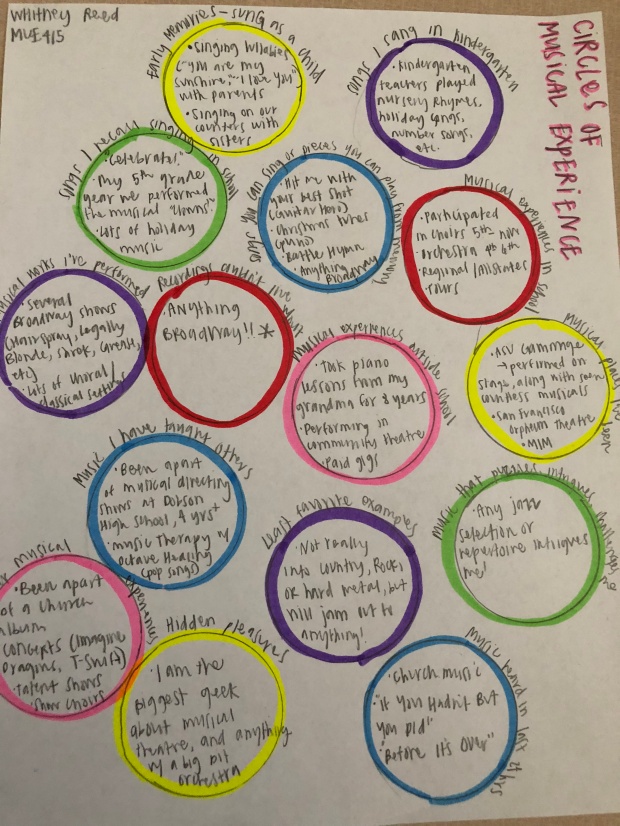I wanted to ensure I took as much time as needed for this reading, to really grasp the focus of this chapter. I really appreciated how thorough yet precise Dr. Tobias was in explaining and elaborating on this concept of hybridity. While I was reading this section, I loved how learning with digital media and technology to me might have seemed like a wound up ball of knowledge and experience that I am not familiar with, yet the explanations and examples given here really enlightened me and enhanced my knowledge.
There were a couple terms and ideas that I would like a further explanation on, or even a few more examples given that would solidify my understanding of these concepts. The first one was the terms “multifaceted” or “hyphenated musicianships.” When I break down these terms separately, I understand there meaning, but would like to know a little bit more about what “multifaceted” musicians might look like. The second term that I found confusing was “musical trajectories.” I am not familiar with this word, or have a clear understanding of it in this context. Lastly, the idea that “dichotomies between music and and music technology courses are based on artificial differentiations and assumptions that constitutes important knowledge, skills and understanding” (Tobias, 115). I am unaware of what the term “dichotomies” means, and furthermore would like to break down this concept to smaller ideas.
One of the biggest factors that differentiates a hybrid classroom from more traditional practices such as “music theory” or “band, orchestra and chorus” is the idea of hybrid versus compartmentalized or specialized learning. This concept that “music educators might foster comprehensive environments where technology and digital media can support students’ learning and musicking” with the flexibility of a hybrid class to account for “rich, multifaceted, and dynamic ways in which people know and do music that might not be addressed in specialized classes and ensembles” is what sets a hybrid class apart from a traditional ensembles (115). This understanding for me came after the light bulb that clicked in me, regarding what the word “hybrid” meant! I thoroughly enjoyed the reference to biology, and that mental image that I was able to create in my head depicting the identity of crossovers and combinations embraced by hybridity.
In addition, aspects of a hybrid classroom that might be beneficial to students includes the flexible and comfortable nature of the class, a comprehensive curriculum that could foster musical engagement outside of the traditional ensemble, and a structured avenue of collaborative approaches that would engage in projects that “might not fit within preplanned curricular structures” (118). As a result, multiple forms of projects, connections, and musical engagements would be the offspring of a hybrid class.
On the other hand, music educators might also deal with challenges that come in a hybrid classroom. These challenges might include how to accurately monitor the process over product results in terms of assessments if needed in a school setting, a lack of resources to really establish a strong, resourceful hybrid classroom, or even just the mental drawback of those who are not willing to collaborate and extend their experiences with musical engagements.
To conclude, one of the biggest questions that I have in futuristically designing and facilitating my own hybrid music classroom would be how to balance the “formal,” or traditional aspects of musical engagement with the crossover of hybrid techniques? My biggest fear in starting a class like this would also be the lack of resources and knowledge I have with technology, and therefore I would want to know what are the essential basics that I would need in order to stand on my own two feet!
